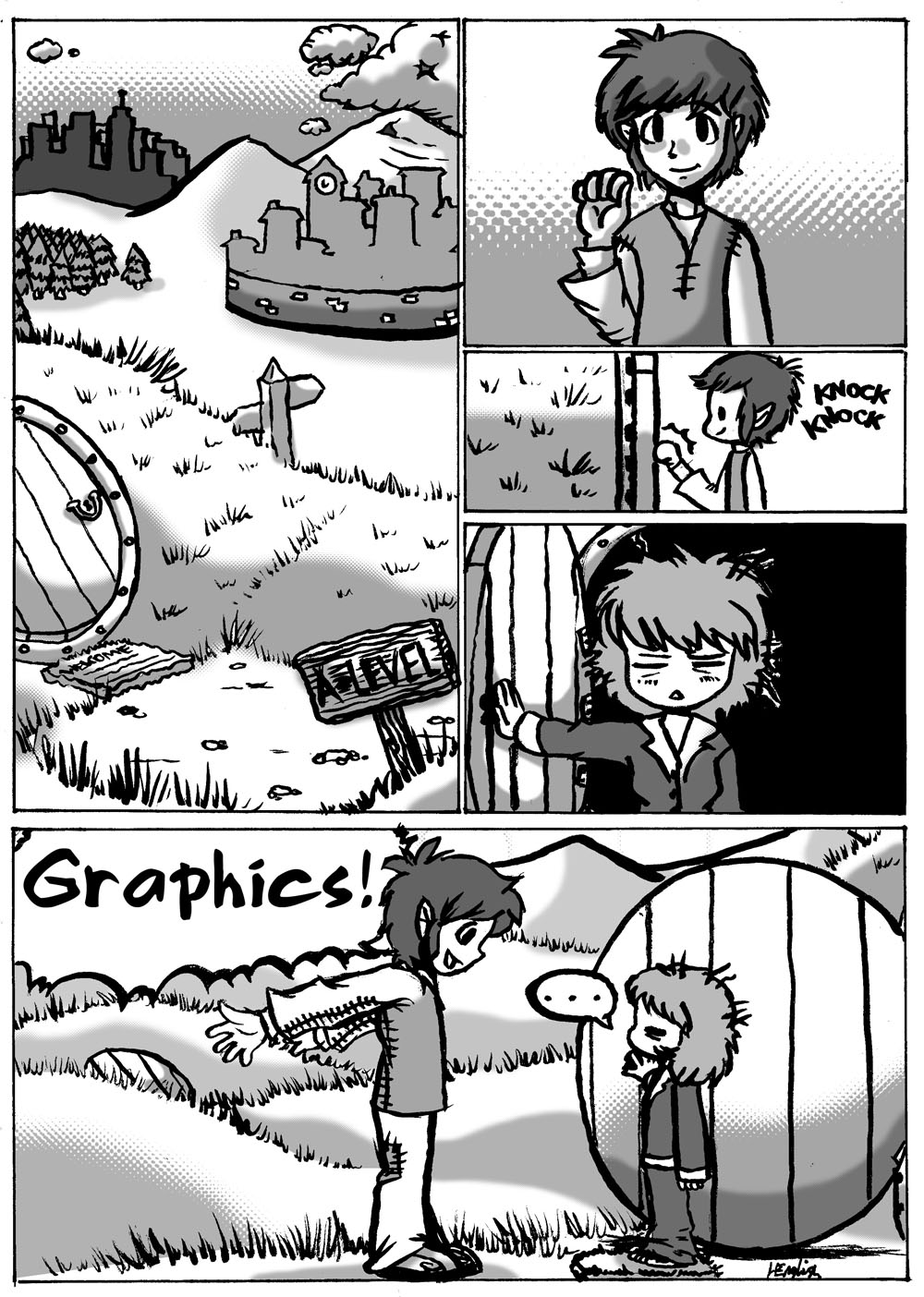The case study I've chosen is "Woweezonk: Pobody's Nurfect" by Patrick Kyle, Ginette Lapalme and Chris Kuzma (Koyama Press).
Personal Response
What drew my attention first to "Pobody's Nurfect" was the colour contrasts and the way they clashed with each other. The book is detailed and yet simplistic at the same time, and sort of reminds me of the animated bits of Monty Python. Particularly because of the crazy ideas and imagination involved, and partly because there's something about it that's a bit disgusting.
I like "Pobody's Nurfect" because it has a lot of imagination and emotion, there's a lot to look at and a lot of it contains a good sense of humour, but I'm not so fond of the fact that it hurts my eyes and brain and is really kind of gross. Admittedy, I didn't like at first because of these reasons but my opinion changed over time as I got used to the styles and allowed myself to be more objective and openminded about them. I love the way that just by looking at certain pages, it makes me want to draw big pictures with lots of things going on, of a similar ilk to it.
Form
The colour palette is bright, flourescent and clashing - using in particular reds, pinks, greens and yellows. As it is a collaboration between three artists, there are lots of different styles that constrast and go together really well. Not only are the styles different but the artists each use different mediums and materials. Maybe this is for contrast and variety, or maybe tofurther distinguish each of the artists' work.
The words I would use to goofily describe it are VIGOROUS, ANGRY, PASSIONATE, WEIRD and ADVENTUROUS.
Throughout there is a lot of "evidence of the hand that made it". There are quite a few "imperfections" like colour leaking outside of the lines, and other little subtlties and inconsistencies that a computer could not replicate. These only further its awesomeness, making it feel more handmade and creative, and less polished in an artistic and fun way. As if the mistakes were done on purpose.
Textures have been rendered by comic shorthand; it is unrealistic and only a small amount of lines have been used to convey folds in clothes, skin and texture. However there are a few pages that include more detailed art involving more lines. Space is used to make the reader focus on the main picture or a particular aspect of it. The overall perspective is abstract.
The composition seems pretty much random – there is little structure, sense, or apparent control to it – it seems to have been thrown together, but with positive effect.
Context and Content
“Woweezonk: Pobody’s Nurfect” is a medley of pictures that convey imagination, ideas and emotions. There seems to be no particular subject matter or narrative but there does seem to be a running theme with bright colours, emotion, humanoid characters used in the pictures, and general crazy weirdness. It has a form that breaks many conventions.
The title “Woweezonk: Pobody’s Nurfect” is a combination of what appears to be gibberish and a comically imperfect spin on a phrase, probably to reflect the meaning of the phrase itself.
The book may have been produced for the sake of imagination and creation; a creative outlet for the artists; and perhaps for profit too.
Process
The process is of good quality, using professional means and materials (such as the paper) used. It primarily uses modern processes, particularly the use of computers and a camera. There are clues such as some evident editing of some of the picture in photoshop, and it is clearly printed from a computer. The forward and the book information is computer-processed text – it’s been typed. However many of the actual pictures have been originally created by hand; the title on the first page is also handwritten. It seems as though it was thrown together on a computer and then printed. Skills needed to produce such a piece include computer knowledge, skills in photography and printing, and artistic talent/skills including drawing and painting. Also general artistic integrity.






































